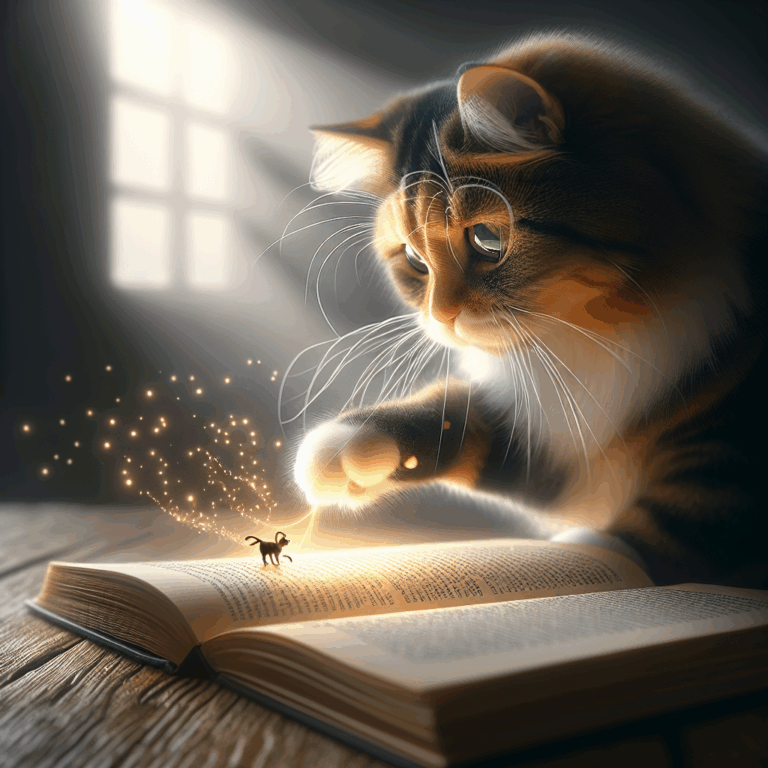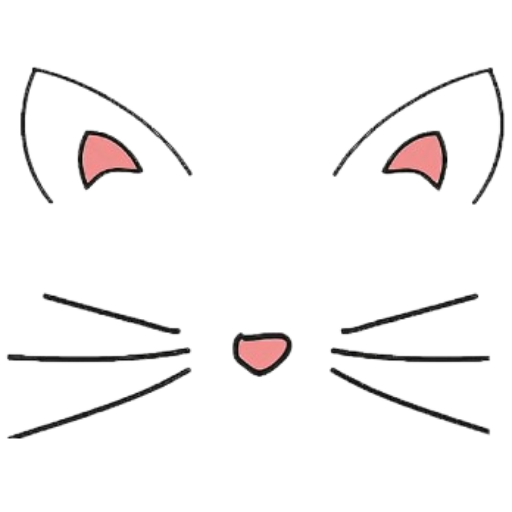The Feline Innovators of Literature: Cats and Their Subtle Influence on the Written Word
- 2 Comments
In the ever-evolving world of literature, where new genres are born and old ones are revitalized, one might not immediately think of cats as literary muses. However, these enigmatic creatures have long been entwined with the written word, influencing authors and captivating the imaginations of readers across the globe. From the pages of ancient manuscripts to contemporary bestsellers, cats have not only been subjects of storytelling but have also played a crucial role in shaping narratives and inspiring literary creativity.
Historically, cats have been companions to some of the most renowned writers. Their mysterious nature and independent spirit have often served as muses for authors seeking to capture the complexities of human emotion and the intricacies of unseen worlds. For instance, in the 19th century, Edgar Allan Poe found solace in the company of his feline companion, Catarina, who is said to have inspired elements of his dark and haunting tales. Similarly, T.S. Eliot’s affection for cats is evident in his whimsical collection of poems, “Old Possum’s Book of Practical Cats,” which later became the foundation for the celebrated musical “Cats.”
Cats’ influence on literature extends beyond their presence as muses; they have also been central characters that drive narratives and symbolize a myriad of themes. In Ernest Hemingway’s idyllic home in Key West, a multitude of polydactyl cats roamed freely, becoming synonymous with the writer’s legacy and inspiring the feline characters that appear in his stories. These cats, with their distinctive extra toes, have become a literary symbol of uniqueness and resilience.
In modern literature, cats continue to hold a prominent place, often representing the mysterious and the magical. Haruki Murakami’s novels frequently feature cats that embody otherworldly qualities, guiding protagonists on surreal journeys and serving as catalysts for introspection and transformation. In Neil Gaiman’s “Coraline,” a black cat assists the young heroine in navigating a parallel world, symbolizing wisdom and the power of intuition.
Beyond fiction, cats have also influenced the realm of poetry, where their grace and elegance have inspired verses that capture the essence of beauty and independence. Poets like Charles Baudelaire and Pablo Neruda have penned odes to these creatures, celebrating their enigmatic charm and the quiet companionship they offer.
The relationship between cats and literature is not limited to traditional print. In the digital age, online platforms have become a new frontier for literary exploration, with cats often at the forefront. Blogs, social media accounts, and online communities dedicated to feline-inspired writing have emerged, providing a space for both amateur and seasoned writers to share their work. This digital literary movement underscores the enduring appeal of cats and their ability to captivate audiences in new and innovative ways.
As we look to the future, the bond between cats and the literary world shows no signs of waning. Whether as muses, characters, or symbols, cats continue to inspire writers and enchant readers, reminding us of the timeless allure of the written word and its ability to transcend the ordinary. In a world where stories are constantly being rewritten, cats remain the silent architects of imagination, their influence woven into the very fabric of literary history. As long as there are tales to be told, it seems certain that cats will continue to walk the pages of literature, leaving their indelible pawprints on the stories we cherish.

In the ever-evolving world of literature, where new genres are born and old ones are revitalized, one might not immediately think of cats as literary muses. However, these enigmatic creatures have long been entwined with the written word, influencing authors and captivating the imaginations of readers across the globe. From the pages of ancient manuscripts to contemporary bestsellers, cats have not only been subjects of storytelling but have also played a crucial role in shaping narratives and inspiring literary creativity.
Historically, cats have been companions to some of the most renowned writers. Their mysterious nature and independent spirit have often served as muses for authors seeking to capture the complexities of human emotion and the intricacies of unseen worlds. For instance, in the 19th century, Edgar Allan Poe found solace in the company of his feline companion, Catarina, who is said to have inspired elements of his dark and haunting tales. Similarly, T.S. Eliot’s affection for cats is evident in his whimsical collection of poems, “Old Possum’s Book of Practical Cats,” which later became the foundation for the celebrated musical “Cats.”
Cats’ influence on literature extends beyond their presence as muses; they have also been central characters that drive narratives and symbolize a myriad of themes. In Ernest Hemingway’s idyllic home in Key West, a multitude of polydactyl cats roamed freely, becoming synonymous with the writer’s legacy and inspiring the feline characters that appear in his stories. These cats, with their distinctive extra toes, have become a literary symbol of uniqueness and resilience.
In modern literature, cats continue to hold a prominent place, often representing the mysterious and the magical. Haruki Murakami’s novels frequently feature cats that embody otherworldly qualities, guiding protagonists on surreal journeys and serving as catalysts for introspection and transformation. In Neil Gaiman’s “Coraline,” a black cat assists the young heroine in navigating a parallel world, symbolizing wisdom and the power of intuition.
Beyond fiction, cats have also influenced the realm of poetry, where their grace and elegance have inspired verses that capture the essence of beauty and independence. Poets like Charles Baudelaire and Pablo Neruda have penned odes to these creatures, celebrating their enigmatic charm and the quiet companionship they offer.
The relationship between cats and literature is not limited to traditional print. In the digital age, online platforms have become a new frontier for literary exploration, with cats often at the forefront. Blogs, social media accounts, and online communities dedicated to feline-inspired writing have emerged, providing a space for both amateur and seasoned writers to share their work. This digital literary movement underscores the enduring appeal of cats and their ability to captivate audiences in new and innovative ways.
As we look to the future, the bond between cats and the literary world shows no signs of waning. Whether as muses, characters, or symbols, cats continue to inspire writers and enchant readers, reminding us of the timeless allure of the written word and its ability to transcend the ordinary. In a world where stories are constantly being rewritten, cats remain the silent architects of imagination, their influence woven into the very fabric of literary history. As long as there are tales to be told, it seems certain that cats will continue to walk the pages of literature, leaving their indelible pawprints on the stories we cherish.



2 thoughts on “The Feline Innovators of Literature: Cats and Their Subtle Influence on the Written Word”
This post beautifully highlights the unique and enduring relationship between cats and literature, showcasing their subtle yet profound impact on storytelling.
It’s wonderful to see appreciation for the deep connection between cats and literature. Their influence truly enriches storytelling in fascinating ways.